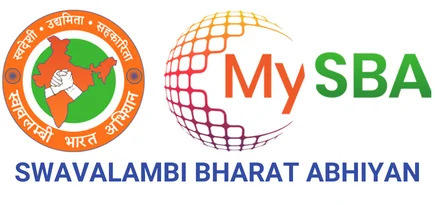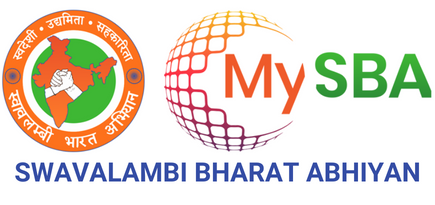The Pradhan Mantri Mudra Yojana (PMMY) in India has a clear mission, vision, and purpose aimed at promoting financial inclusion, fostering entrepreneurship, and supporting the growth of micro and small enterprises. Here’s an overview of its mission, vision, and purpose.
Mission: The mission of the Pradhan Mantri Mudra Yojana is to provide financial assistance and support to micro and small entrepreneurs across the country. It aims to create a level playing field by offering them access to formal credit and financial services, especially those who have historically been excluded from traditional banking channels. The mission also seeks to enable job creation, economic empowerment, and self-reliance among individuals and communities, ultimately contributing to India’s economic development.
Vision: The vision of PM Mudra Yojana is to build a strong and vibrant entrepreneurial ecosystem in India where individuals from diverse backgrounds and sectors can transform their business ideas into successful enterprises. It envisions a financially inclusive society where small and micro-enterprises play a significant role in economic growth, poverty reduction, and the overall development of the nation. The scheme aspires to empower women, youth, and marginalized communities to become self-sufficient through entrepreneurship.
Purpose: The primary purpose of the PM Mudra Yojana is multi-fold:
Promote Entrepreneurship: The scheme aims to promote entrepreneurship as a means of livelihood generation and economic growth. By providing access to credit, it encourages individuals to start their businesses and become self-employed.
ELIGIBILITY CRITERIA of MUDRA Yojana
People must be Indian citizens to be eligible for the PMMY Scheme’s benefits.
The loans provided under this program are specially created for those engaged in non-farming industries that provide income, such as o Manufacturing
- Manufacturing
- Trading
- Service Industry
- Other industries with credit demands under Rs. 10 lakh.
Indian residents can approach Microfinance Institutions (MFI), Banks, or Non-Banking Financial Companies (NBFC) to apply for MUDRA Loans under the PMMY Scheme.
PRADHAN MANTRI MUDRA YOJANA – OBJECTIVES
The MUDRA Loan program is managed by the Micro Units Development and Refinance Agency (MUDRA). It offers small-scale industries loans up to INR 50 lakhs for working capital.
It works with regional and state-level coordinators as a Last-Mile financier to provide funding to small and micro business firms.
The following are some of MUDRA Bank’s goals:
Providing loans up to INR 10 lakhs for non-farm enterprises like processing, trading, manufacturing, etc. to fund the underfunded. It aids businesses that require immediate capital.
Increasing job prospects by giving credit to micro and small businesses, which helps the GDP increase overall.
· Controlling new registrations while regulating and overseeing Microfinance Institutions (MFIs).
TYPES OF YOJANA
Under the Pradhan Mantri Mudra Yojana (PMMY), loans are categorized into three main types based on the financing needs and the stage of the micro or small business. These loan categories are designed to cater to a range of entrepreneurs and businesses:
- Shishu Loans:
Loan Amount: Up to ₹50,000
Target Beneficiaries: Entrepreneurs who are in the early stages of their business or require a small amount of capital to start a new venture.
Purpose: Shishu loans are intended to support small business owners in setting up their enterprises, purchasing equipment, or covering initial operating costs.
- Kishore Loans:
Loan Amount: ₹50,001 to ₹5,00,000
Target Beneficiaries: Businesses that have already been established but need additional capital to expand or scale up their operations.
Purpose: Kishore loans are meant for entrepreneurs who have some experience and want to grow their existing businesses. These loans can be used for working capital, purchasing machinery, or expanding the product or service offerings.
- Tarun Loans:
Loan Amount: ₹5,00,001 to ₹10,00,000
Target Beneficiaries: Established small and micro-enterprises that are looking for substantial funding to further expand their businesses.
Purpose: Tarun loans are designed for entrepreneurs who have a well-established business and are seeking significant capital infusion. These loans can be used for expanding production, upgrading technology, increasing capacity, or diversifying business activities.
THE MUDRA YOJANA
The Mudra Yojana, also known as the Pradhan Mantri Mudra Yojana (PMMY), is a government of India initiative launched in April 2015. The primary objective of this scheme is to provide financial support and assistance to small and micro-enterprises in the country by offering them access to institutional finance. The term “Mudra” stands for “Micro-Units Development and Refinance Agency.”
Here are some key features and aspects of the Mudra Yojana:
Target Beneficiaries: The scheme primarily targets small and micro-businesses, including small shopkeepers, artisans, fruit and vegetable vendors, micro-manufacturers, and other individuals involved in non-farm small/micro-enterprises.
Three Loan Categories: The Mudra Yojana offers loans under three different categories, based on the financing needs of the beneficiaries:
Shishu: Loans up to ₹50,000 for entrepreneurs who are in the initial stages of their business.
Kishore: Loans ranging from ₹50,001 to ₹5,00,000 for businesses that have already started and need to expand.
Tarun: Loans ranging from ₹5,00,001 to ₹10,00,000 for established businesses looking for further growth and expansion.
Collateral-Free Loans: One of the significant advantages of Mudra Yojana is that it provides collateral-free loans, making it easier for small entrepreneurs to access credit.
Interest Rates: Interest rates on Mudra loans are typically lower than those on traditional business loans, and they may vary depending on the lending institution’s policies.
Eligible Lenders: Various financial institutions, including commercial banks, regional rural banks, cooperative banks, and microfinance institutions, are involved in disbursing Mudra loans.
Application Process: Entrepreneurs can apply for Mudra loans through participating banks or financial institutions by providing essential documents and meeting the eligibility criteria.
Refinancing: The Mudra Yojana also operates as a refinancing agency, providing funds to lending institutions, which, in turn, lend to micro and small enterprises.
Employment Generation: The scheme aims to promote entrepreneurship and job creation by supporting small and micro-enterprises, thereby contributing to economic growth and employment generation in India.
The Pradhan Mantri Mudra Yojana has played a crucial role in fostering financial inclusion and supporting the growth of small and micro-businesses in India. It has empowered countless individuals to start and expand their enterprises, leading to economic development at the grassroots level.
BENEFITS OF MUDRA LOAN
MUDRA (Micro Units Development and Refinance Agency) loans, offered through the Pradhan Mantri Mudra Yojana (PMMY) in India, provide various benefits to micro and small entrepreneurs. Here are some of the key advantages of MUDRA loans:
Financial Inclusion: MUDRA loans promote financial inclusion by providing access to formal credit for individuals and businesses that may not have had access to traditional banking services.
Collateral-Free: One of the significant benefits is that MUDRA loans are typically collateral-free, reducing the financial risk for borrowers who may not have assets to pledge as security.
Interest Rate Subsidy: The government may provide interest rate subsidies on MUDRA loans, making them more affordable for borrowers.
Support for Various Sectors: MUDRA loans support a wide range of micro and small enterprises, including agriculture, manufacturing, trading, and services. This diversity allows entrepreneurs from various sectors to benefit from the scheme.
Flexible Loan Amounts: The MUDRA Yojana offers loans under different categories (Shishu, Kishore, and Tarun), allowing borrowers to choose a loan amount that suits their business needs and stage of development.
Job Creation: By providing capital to small and micro-businesses, MUDRA loans contribute to job creation, as many of these enterprises hire local workers and stimulate economic activity in their communities.
Entrepreneurship Promotion: The scheme encourages entrepreneurship and self-employment, fostering a culture of innovation and economic independence.
Boosting Local Economies: MUDRA loans can help boost local and rural economies by providing funds to small businesses that may not have access to other sources of financing.
Support for Women Entrepreneurs: The scheme specifically targets women entrepreneurs and offers special benefits to encourage women to start and expand their businesses.
Technology and Modernization: MUDRA loans can be used for investing in technology, machinery, and equipment, helping businesses modernize their operations and become more competitive.
Micro-Enterprise Growth: Small businesses receiving MUDRA loans often experience growth in production capacity, leading to increased sales and revenue.
· Reduced Dependence on Informal Lending: By providing access to formal credit, MUDRA loans reduce the reliance on informal moneylenders, which often charge exorbitant interest rates.
·Government Support: MUDRA loans are part of a government-supported initiative, which means borrowers can have confidence in the legitimacy and credibility of the program.
BENEFICIARIES OF MUDRA LOANS
The Pradhan Mantri Mudra Yojana (PMMY) in India is designed to support micro and small enterprises across a wide range of sectors. The beneficiaries of MUDRA loans include various individuals and entities engaged in entrepreneurial activities. Here are the primary categories of beneficiaries:
Individual Entrepreneurs: Many individual entrepreneurs, including women, men, and socially disadvantaged groups, benefit from MUDRA loans to start or expand their small businesses. These individuals typically operate micro-enterprises in sectors such as retail, services, agriculture, and manufacturing.
Micro and Small Business Owners: Owners of micro and small businesses, which may include shops, trading ventures, manufacturing units, and service providers, can access MUDRA loans to finance their working capital requirements, purchase machinery, expand operations, and meet other business-related needs.
Women Entrepreneurs: MUDRA Yojana places special emphasis on supporting women entrepreneurs. It offers women-specific loan products and encourages women to participate in entrepreneurial activities, thus promoting women’s economic empowerment and self-reliance.
Small and Marginal Farmers: Small and marginal farmers can avail of MUDRA loans to fund their agricultural and allied activities. This includes purchasing agricultural equipment, seeds, and fertilizers, and covering the cost of irrigation and crop cultivation.
Artisans and Craftspeople: Artisans, weavers, craftspeople, and individuals involved in traditional and cottage industries can use MUDRA loans to invest in raw materials, tools, and equipment, as well as to expand their market reach.
Shopkeepers and Retailers: Small shopkeepers, kirana store owners, and retailers can benefit from MUDRA loans to maintain inventory, upgrade their stores, and enhance their business infrastructure.
Service Providers: Individuals offering various services such as beauty parlors, healthcare clinics, tailoring, repair services, and other service-oriented businesses can access MUDRA loans for business expansion and service quality improvement.
Entrepreneurial Start-ups: MUDRA loans can be utilized by aspiring entrepreneurs who want to turn their innovative ideas and start-up ventures into successful businesses. These loans can help fund the initial capital requirements and early-stage development.
Rural and Urban Entrepreneurs: MUDRA loans cater to entrepreneurs in both rural and urban areas, recognizing that micro and small enterprises operate in diverse geographic settings and sectors.
Informal Sector Workers: Many workers in the informal sector, such as street vendors, hawkers, and small-scale service providers, can access MUDRA loans to formalize and expand their businesses.
Scheduled Caste (SC), Scheduled Tribe (ST), and Other Socially Disadvantaged Groups: MUDRA Yojana promotes financial inclusion by extending support to individuals from marginalized communities, including SCs, STs, and other backward classes, enabling them to uplift their economic status.
Overall, MUDRA loans are intended to benefit a wide spectrum of entrepreneurs and businesses, especially those in the micro and small enterprise segment, by providing them with access to affordable and formal sources of credit. This initiative aims to foster economic growth, job creation, and financial inclusion across India.
HOW SWAVLAMBI BHARAT ABHIYAN’ IS LINKED UP WITH MUDRA YOJANA
Swavlambi Bharat Abhiyan is Abhiyan intended to support and motivate the youth of Bharat to be entrepreneurs and be the growth engines of the Nation. The main motive of Swavlambi Bharat Abhiyan is to motivate young minds to be Job Providers instead of Job Seekers. Swavalambi Bharat aims to achieve 100% Jobs and income for Indians by 2030 by making Bharat a Self-Sufficient Nation. SBA provides complete guidance on various Government Schemes and the Mudra Yojana Scheme is one of the best Schemes for boosting entrepreneurial journey.
The Swavlambi Bharat Abhiyan (SBA) is a campaign to educate people about starting businesses, being an entrepreneur, and finding work. Its principal goal is to give every Indian citizen a job by the year 2030 and to make India independent and self-sufficient. It becomes operational on August 21, 2022.
The Swavlambi Bharat Abhiyan’s digital platform, MySBA, attempts to influence young people’s perspectives about obstacles and how to improve their surroundings. This will assist them in determining the entrepreneurial path they choose. or any other strategy that will improve their chances of making a living.
FEATURES of MYSBA
This strategy is built on a decentralized approach to youth empowerment at the local level, creating chances by putting individuals/industries and professionals on a single platform to improve individual knowledge, skills, and capacities.
Additionally, it promotes independence and active engagement.
The endeavor will serve as a template for the growth of cooperative movements for FPO, SHG, and later others. By organizing their existing or operating capacities at the local level, it will aid in capacity building.
FREQUENTLY ASK QUESTIONS
The MUDRA scheme stands for?
MUDRA (Micro Units Development and Refinance Agency Ltd.) is a national development program for micro-businesses, offering banks and other financial institutions refinancing assistance so they can continue extending loans to micro units.
What types of loans are available under the MUDRA scheme?
The MUDRA scheme has three different loan types: Shishu (loans up to 50,000 INR), Kishore (loans up to 5 lakh INR), and Tarun (loans up to 10 lakh INR).
Which banks give loans through the MUDRA program?
Some of the banks that provide MUDRA loans are the Oriental Bank of Commerce, ICICI Bank, Kotak Mahindra Bank, Standard Chartered Bank, and the Indian Bank.





